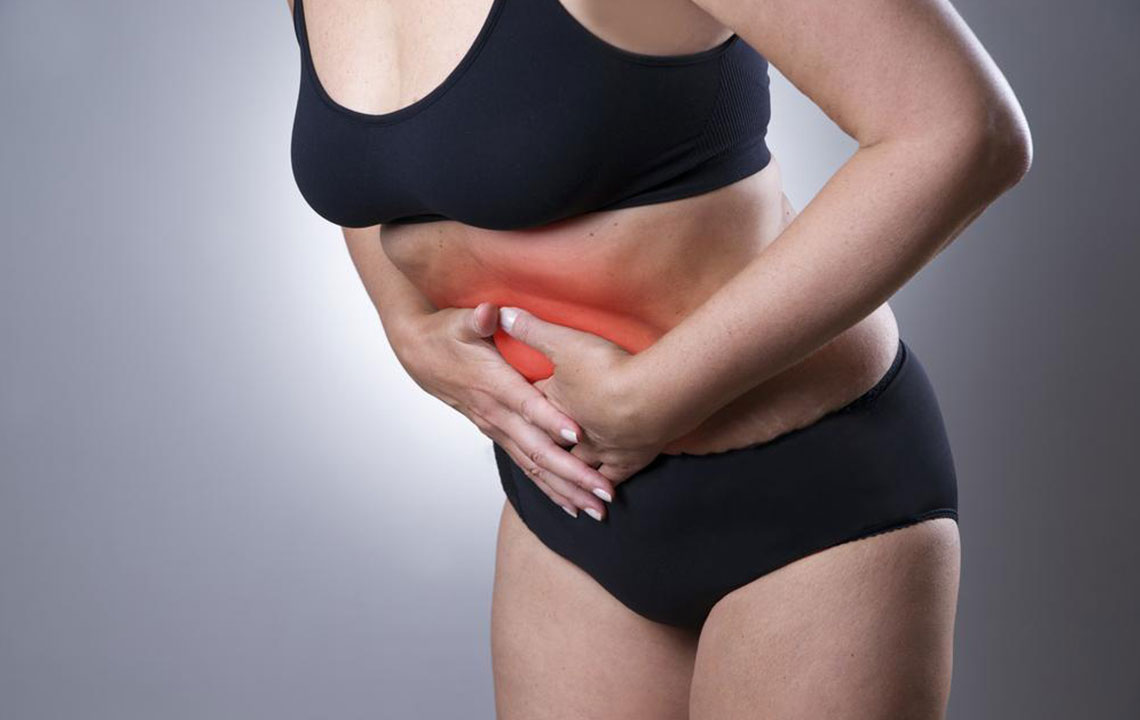Effective Tips to Get Relief from Abdominal Bloating

Everybody knows that with abdominal bloating one experiences physical discomforts. When air or gas fills in your GI (gastrointestinal) tract, you experience stomach or abdominal bloating. People suffering from abdominal bloating feel full and tight, and there can be a swollen feeling in the abdomen as well. Pain, flatulence, belching or burping, and abdominal rumbling follows bloating, and this condition reduces the quality of life seriously. The major causes of bloating are chewing gum, eating fast, wearing loose dentures, smoking, IBS, Crohn’s disease, heartburn, weight gain, food intolerance, stress or anxiety, eating disorders, hormonal flux, giardiasis, constipation, visceral hypersensitivity, and altered gut motility. If you’re wondering how to get abdominal bloating relief, the following tips will help.
Make efforts to get maximum protection from lactose intolerance and allergies
Many people suffer from bloating due to food intolerance and allergies. First of all, you have to seek the help of your doctor to identify the cause of bloating. Self-diagnosis is not at all an advisable practice to follow. When you take decisions without adequate knowledge, you may end up inviting a lot of health complications. If you sense intolerance or allergy, consult with your doctor to identify the cause. The amount of the suspected food can be lowered, or it can be consumed with other foods to reduce the negative impact. If you find that dairy products are causing the problem, you can select yogurts and aged cheeses because of their reduced lactose quantity. These will help in providing abdominal bloating relief.
Be cautious about sugar alcohol
Various studies show that several people suffer from bloating due to their increased consumption of sugar alcohol. Artificially sweetened drinks and food contain a lot of sugar alcohol, and it makes you highly vulnerable to bloating. Health experts advise people to limit their consumption of artificially sweetened foods and drinks into 2 or 3 servings a day to get abdominal bloating relief.
Avoid the causes of constipation
Constipation is a major cause of bloating. When you consume an inadequate amount of fluids and fiber, you may have to deal with constipation, and lack of physical activity also leads to constipation. To prevent it, you must raise your fiber intake. The commended quantity for men is 38 grams a day and women should take 25 grams per day. The best sources for fiber are seeds, nuts, legumes, vegetables, fruits and whole grains. The fluid intake must also be increased, and you can take 6 to 8 glasses a day. When it comes to exercise, you should spend 30 minutes a day. Those people, who follow low fiber diet, must increase their fiber intake in combination with water intake to ensure better tolerance and to get abdominal bloating relief.
Control your sodium intake
When you consume processed foods, you absorb a lot of sodium, and the fiber quantity is pretty low in these types of foods. This situation causes a bloated feeling. Always read food labels without fail. When you purchase frozen, canned or processed foods, you need to make sure they do not contain more than 500 milligrams of sodium per serving. Your sodium intake for the whole day should be limited to 1,500 to 2,300 milligrams. If you go through the labels of the process foods, you can find out the exact quantity of ingredients available in these foods and find abdominal bloating relief.
Achieve gut bacteria balance with probiotics
You can make use of probiotic supplements to maintain good gut health. Probiotics contain bacteria and yeasts that help with digestion, and the bloating problem can be controlled effectively. Probiotics supplements can be used to control bloating due to difficulty in digesting fiber, IBS (irritable bowel syndrome) and diarrhea. This will help get abdominal bloating relief.
Depend on products containing simethicone
These medications help your body to break up alarming gas bubbles available in your digestive tract, and they allow the bubbles to pass through smoothly. Regular use of these products is not recommended, and the instructions of the manufacturer must be followed very carefully.
Take smaller meals
In place of having three big meals a day, you can go for eating smaller meals quite often. This practice allows you to get rid of the bloated feeling. When you develop the habit of eating more frequently, you can control blood sugar, and the food cravings can also be controlled. You must take five or six small meals every day. At the same time, you have to make sure that the quantity of food and calories remain proportionate to your requirements. These habits will help in getting abdominal bloating relief.
Stop the habit of overdoing chewing gum
When you chew these types of products, you are swallowing air, and it often results in bloating. The habit of chewing gum should be replaced with eating a high finer snack such as fruit, vegetable or a taking a piece of hard candy.
When it comes to abdominal bloating relief, exercise is a good option. It also helps you remove fat from the belly, and your overall health improves significantly as well.


